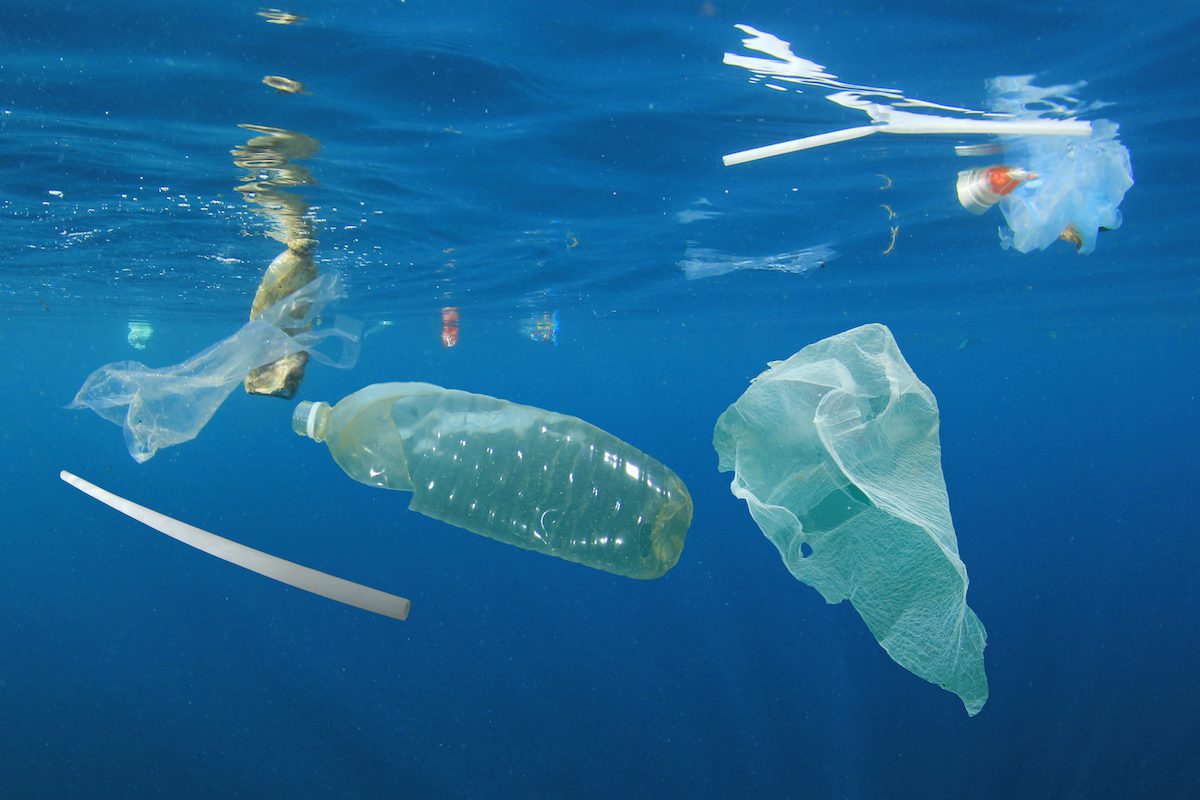Photo: Rich Carey / Shutterstock
By Alexander Kwiatkowski (Bloomberg) — The International Energy Agency has a sobering warning about the health of the world’s oceans.
The total amount of oceanic plastic waste is likely to more than double by 2030, and then keep getting worse, if action isn’t taken now, according to projections by the Paris-based organization in a report published Friday.
Arresting images of strangled turtles and tropical waves clogged with garbage have helped raise awareness about the threat to oceans from plastic waste. But the IEA’s projections suggest that efforts to curb that pollution — such as the movement to ban plastic straws — may prove futile unless there’s a global revolution in recycling and waste management.
It’s estimated that around 100 million metric tons of plastic waste has already “leaked” into oceans, an amount that’s increasing annually by 5 million to 15 million tons, according to research cited by the IEA. The infamous Pacific garbage patch, which covers an area three times the size of France and holds the equivalent of 250 pieces of plastic for each person on earth, may only contain as much as 79,000 tons, the IEA said.
Plastic Pollution in Water Ultraviolet radiation from the sun breaks down plastic into microplastics, which are five millimeters or smaller Microplastics are mistaken for plankton and ingested by marine life, leading to choking and starvation Plastic microbeads used in cosmetics can get flushed into the sewer systems and end up in waterways An estimated 80 percent of the plastic in the ocean is derived from land-based sources, as opposed to fisheries and ships. More than half of that can be attributed to China, Indonesia, Philippines, Thailand, and Vietnam About 3/4 of plastic leakage in oceans that originates on land was never collected as waste; the other quarter leaks from waste management systems
The problem is that recycling and waste management efforts aren’t keeping pace with the massive growth in plastic production and consumption. Less than 20 percent of plastic waste is currently collected for recycling, according to the IEA.
‘Far Outweighed’
“Although substantial increases in recycling and efforts to curb single-use plastics take place, especially led by Europe, Japan and Korea, these efforts will be far outweighed by the sharp increase in developing economies of plastic consumption (as well as its disposal),” the agency wrote in its report on the petrochemical industry.
Global plastics production has increased by more than 10-fold since 1970, faster than any other group of bulk materials, according to the IEA. And demand has nearly doubled since the start of the millennium.
The agency projects that by 2050 production of a group of key thermoplastics including polyethylene terephthalate (used to make plastic bottles), polyethylene and PVC could grow almost 70 percent from 2017 levels. Global production would increase almost 30 percent to more than 60 kilogram per capita .
Emerging Economies
The U.S., Europe, and other developed economies currently use as much as 20 times more plastic per capita than emerging economies, according to the IEA. Developing nations will increase their share of global consumption as their populations get bigger and wealthier, while use by developed countries remains stable or declines.
“Without ambitious action being taken globally, particularly in regions in which plastic demand is growing rapidly, current trends of plastic leakage are unlikely even to slow, let alone reverse,” the IEA said.
The IEA’s projections are according to its Reference Technology Scenario, or how things could develop based on today’s policies and behavior. The future is less bleak under its Clean Technology Scenario.
This model is based on the agency’s Sustainable Development Scenario, which takes “a vision of where the energy sector needs to go and works back from that to the present, rather than projecting forward from today’s trends.”
Under this scenario, “environmental impacts decline across the board”. Thanks to waste management improvements and a rapid increase in recycling, cumulative plastic waste in oceans could be halved by 2050 compared with the RTS scenario. This would require the elimination of materials that defy collection, such as microbeads and ultra-thin plastic films.
As well, “achieving this goal entails a transformation in waste management practices across the globe,” the IEA said, “including widespread waste collection in regions that have poor systems in place at the moment, if at all.”
© 2018 Bloomberg L.P

 Join The Club
Join The Club











